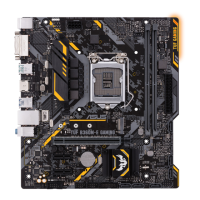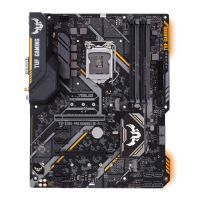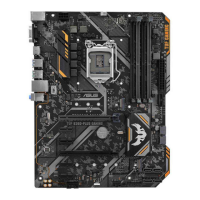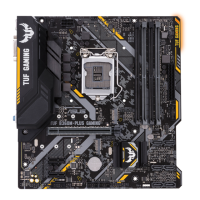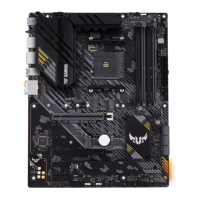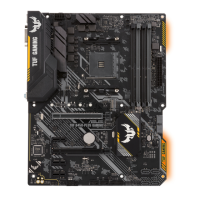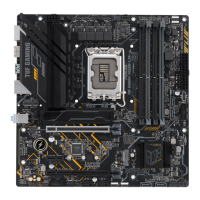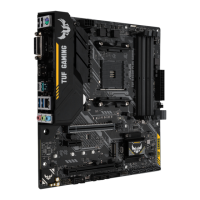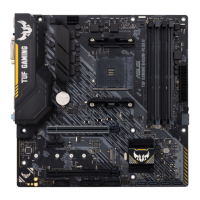Do you have a question about the Asus TUF B365-PLUS GAMING and is the answer not in the manual?
Precautions to prevent electrical shock hazards during system installation and operation.
Guidelines for safe handling and installation of motherboard and components.
Details the supported CPU types, socket, and Turbo Boost Technology.
Details DDR4 memory support, speeds, and configurations.
Precautions before installing motherboard components or changing settings.
Lists and describes the various connectors, jumpers, and slots on the motherboard.
Instructions for installing Intel CPUs into the LGA1151 socket.
Guidelines for installing DDR4 memory modules into the DIMM sockets.
Information on installing M.2 SSD modules into the M.2_1 and M.2_2 sockets.
Instructions on how to clear CMOS RTC RAM data.
Identifies and describes the rear panel ports like PS/2, VGA, LAN, and audio.
Step-by-step instructions for installing the CPU into the LGA1151 socket.
Describes the four DDR4 DIMM sockets and memory configurations.
Visual guide and steps for installing memory modules into DIMM sockets.
Visual guide and steps for removing memory modules from DIMM sockets.
Save a copy of the original motherboard BIOS file to a USB flash disk.
Utility for automatically updating motherboard software, drivers, and BIOS version.
Tool to download and update BIOS via Internet or USB without bootable media.
Auto recovery tool to restore BIOS file when it fails or gets corrupted.
Steps to boot the system in DOS to update the BIOS file.
Procedure to update the BIOS file using the bupdater command in DOS.
Instructions on how to enter BIOS Setup by pressing Delete or F2 during POST.
Overview of the BIOS EZ Mode screen and its basic system information features.
Details advanced options for configuring BIOS settings for experienced users.
Option to load default BIOS settings for compatibility and stability.
| Form Factor | ATX |
|---|---|
| Chipset | Intel B365 |
| Socket | LGA 1151 |
| Memory Slots | 4 x DIMM |
| Maximum Memory | 64 GB |
| Memory Type | DDR4 |
| PCIe x1 Slots | 4 |
| SATA Ports | 6 x SATA 6Gb/s |
| Audio | Realtek ALC887 8-Channel High Definition Audio CODEC |
| Memory Speed | 2666 MHz |
| LAN | Realtek RTL8111H, 1 x Gigabit LAN |
| Video Outputs | 1 x HDMI, 1 x DVI-D |
| USB Ports | 8 x USB 3.1 Gen 1, 6 x USB 2.0 |

